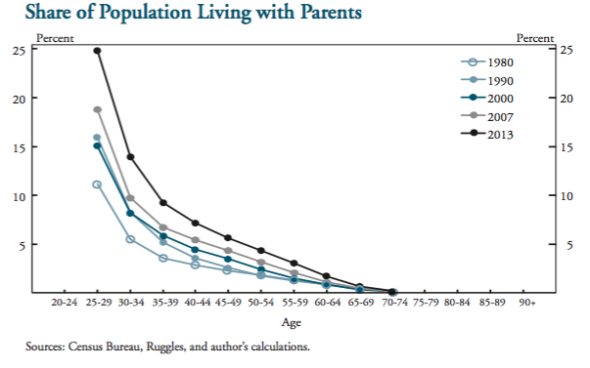We’re half a decade past the recession, yet historic numbers of young adults are still living with their parents. How come? A lot of writers, myself included, have spent a whole heap of words trying to figure it out. But maybe we’ve been asking the wrong questions.
Over at CityLab, Kriston Capps spotted a graph from the Federal Reserve Bank of Kansas City that should reframe the way we talk about Americans returning to the nest. Turns out that adults of all ages are more likely to move back home now than in the past: millennials, Gen Xers, Baby Boomers, everybody. Twenty- and thirtysomethings are extra-likely to return to the nest, but that has always been the case.

As the graph shows, this is not a new phenomenon. Boomeranging became more common across age groups under 50 during the 1980s. The trend paused for young adults during the tech boom, picked up for all during the housing bubble, and accelerated after the economy went to hell in 2007.
This shouldn’t really be surprising. Many of the theories about why more young adults are living at home these days—the decline of marriage, student debt, rising rents and home prices, the cultural habits of immigrants—also apply pretty well to people over the age of 35. Some of those cultural and financial changes may be more pronounced among Gen Y. But fortysomethings have their own problems with education loans. As the Kansas Fed paper notes, aside from senior citizens, Americans of all ages are less likely to be living with a spouse or partner. Twenty-nine-year-olds aren’t the only people who think the rent is too damn high. If we’ve gradually become a society that makes it harder for young people to live on their own, we’ve probably become a society that makes that harder for everybody. Perhaps it’s time to cut the millennials a bit of slack.
